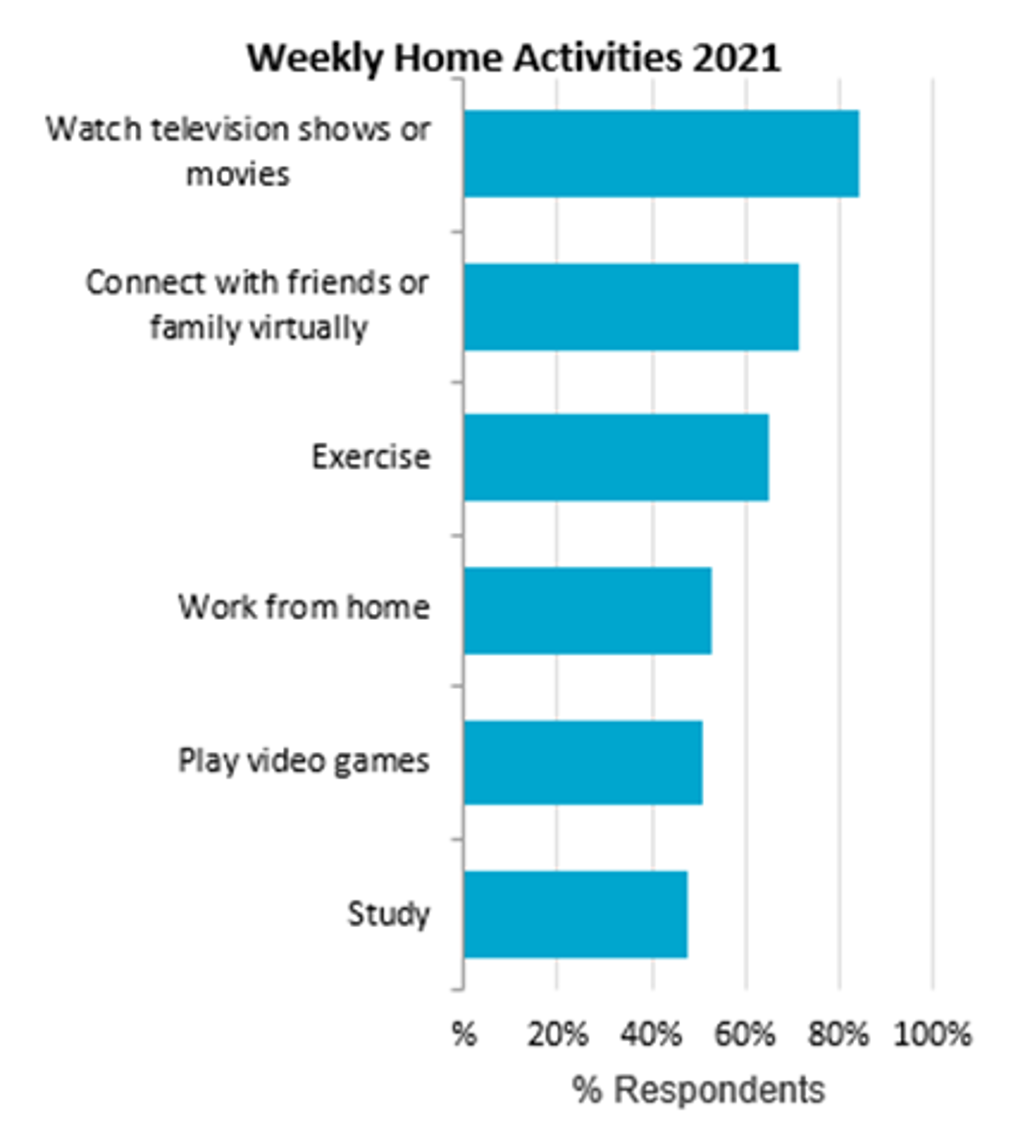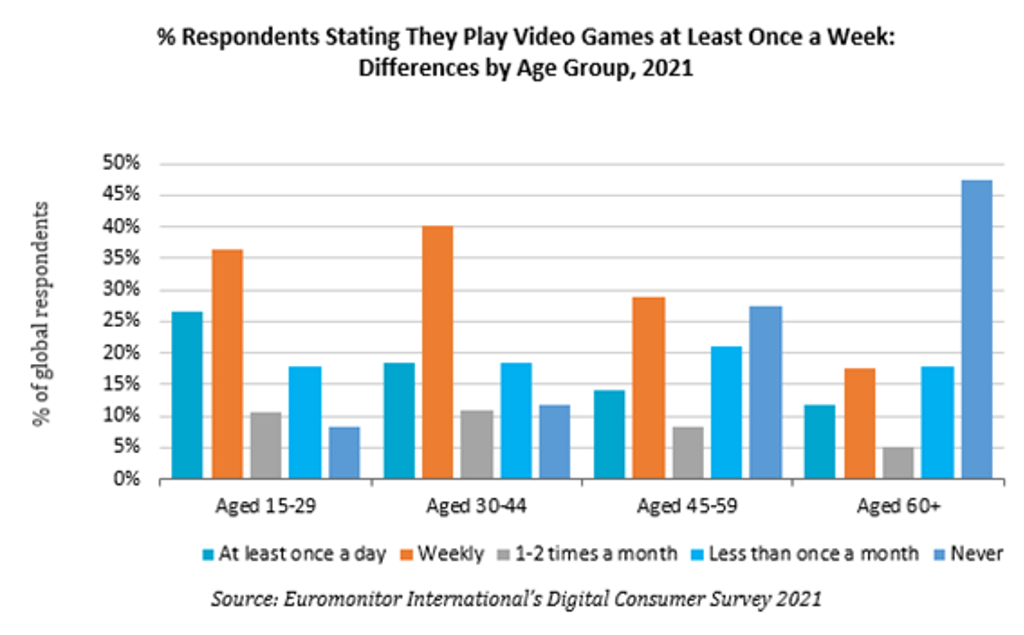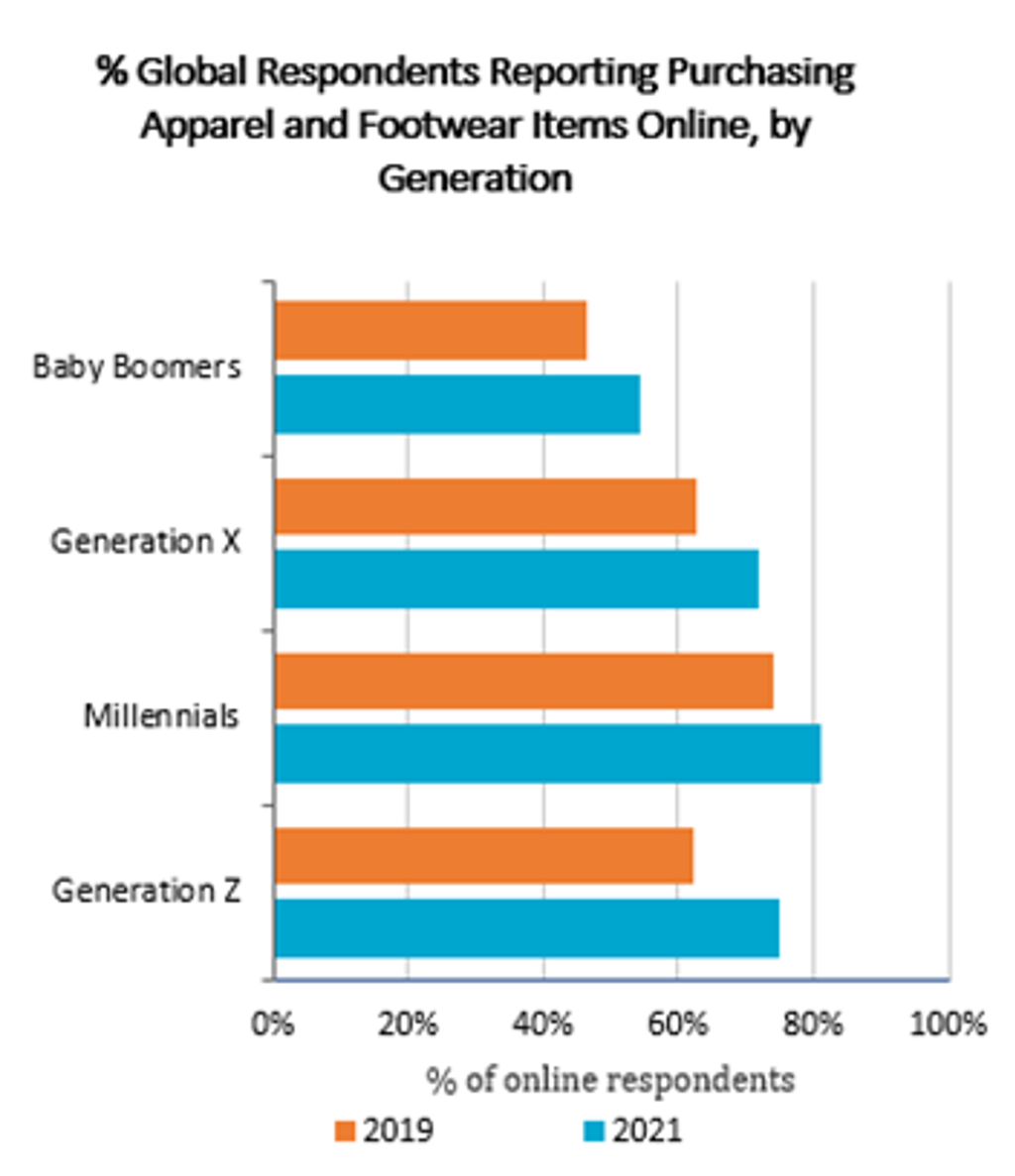Digital garments and NFTs in the fashion space are rapidly proliferating
Since the pandemic outbreak, there has been a proliferation in digital garments and fashion non-fungible tokens (NFTs) which are unique digital assets that are authenticated through blockchain technology. For example, Gucci released its first digital sneakers called The Gucci Virtual 25 in partnership with Roblox; activewear brand Champion launched its 2021 Spring collection available for NFTs in partnership with artist Tafi; adidas released virtual footwear and apparel for Animal Crossing; Balenciaga collaborated with Fortnite, and Dolce & Gabbana raised over USD6 million (in cryptocurrency) by auctioning a mix of real couture and NFTs.
Furthermore, Nike filed to trademark its Nike and Air Jordan brands for various virtual goods at the US Patent & Trademark Office in November 2021, while Zara launched a collaboration with Ader Error for a physical and digital collection, allowing the Spanish retailer to tap into the trend for virtual fashion and global demand for “Hallyu”, the current hype surrounding South Korean culture, from Rosé, to BTS or Squid Game.
New consumers’ routines boost demand for fashion items suited for gaming and social media
The momentum behind virtual clothing can be explained by the lifestyle changes forced by the pandemic. Since many companies in the public and private sectors have decided to maintain hybrid working arrangements as the new normal operating system, and the new wave of Omicron variant has led to further restrictions around the world, the shift to learning, working, eating, shopping, playing and socialising moves further towards the home and online, as illustrated by Euromonitor International’s Voice of the Consumer: Lifestyle Survey 2021.
This has spurred a surge in e-commerce and social commerce with online sales now accounting for 30% of global sales of apparel and footwear versus 19% in 2019. Moreover, Euromonitor International’s Voice of the Industry Survey 2021 shows that 50% of industry professionals in fashion agree that COVID-19 has turbocharged their companies’ digital transformation.

Virtual garments allow younger consumers to indulge their novelty-seeking tendencies without costing the planet
As younger consumers are particularly keen on gaming and social media, they have been the key target audience for digital clothing and NFTs that represent an affordable (yet aspirational) entry-level product for a brand. They can also help boost fashion brands’ sustainability credentials since they allow users to indulge their novelty-seeking tendencies without costing the planet as they have a low environmental impact.

This is becoming particularly important as the shift in consumer demand for greater sustainability accelerates, after the ugly environmental and social impact of the fashion industry has been highlighted by the pandemic; Euromonitor International’s Voice of the Consumer: Lifestyle Survey 2021 shows that 47% of millennials and Generation Z globally think that climate change will have a greater impact on their lives in the future than it has today.
Digital fashion has the potential to attract a broader range of consumers in the future
Consumers across all age groups were forced to take the digital plunge since the pandemic outbreak, and all signs point to the rapid technological development for a possible mass adoption of virtual avatars and body doubles. From Facebook rebranding as “Metaverse” to Walmart acquiring Zeekit or Amazon “Made for You” leveraging body doubles for their new on-demand manufacturing services, digital fashion is set to increasingly attract a broad segment of consumers, beyond younger millennials and Generation Z.
In this context, an increasing number of digital product innovations in the fashion space is likely to emerge in the next few years, and brands investing today in NFTs, AR, VR, and IoT technologies are positioning themselves for the virtual revolution.

Source: Euromonitor International Voice of the Consumer: Lifestyles Survey, fielded in April 2021
Fashion players must indeed be prepared for further disruption in consumers’ routines and shopping habits. New flexible operating models, targeted incentives for consumers and above all, new product innovation, will be critical in ensuring future success.
For further details on the main trends in apparel and footwear, see World Market for Apparel and Footwear
